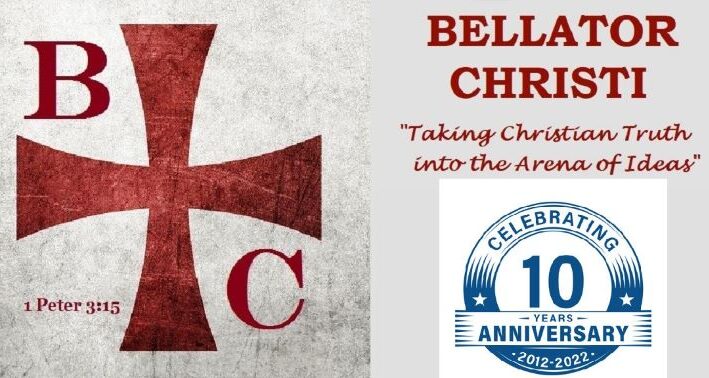By Daniel Merritt | January 17, 2023
We come to our third and final article on Understanding Biblical Inspiration. It has been the objective of the last two articles to gain an understanding of biblical inspiration and what determines the canonization of the books in the Old and New Testaments. We have examined what is meant by canonicity and how the 39 books in the OT and the 27 books in the NT came to be categorized as “God-breathed” scripture. Before proceeding, the reader might want to refresh their memory by rereading the first two articles.
Having looked at the canonization of the 66 books in OT and NT, the books preserved in the Protestant Bible, we will now turn our attention to answering several questions. How did the Apocryphal books become part of some Bibles? Is the Apocrypha inspired and part of the OT canon? If the Apocrypha is not inspired and worthy of canonization, why not?
The Inclusion of the Apocryphal Books
The Apocrypha is a collection of books, generally produced between the second century BC and the first century AD, which were not a part of the original Old Testament canon. These books are: First and Second Book of Esdras, Tobit, Judith, The Additions to the Book of Esther, The Wisdom of Solomon, Wisdom of Jesus the Son of Sirach, Baruch, The Letter of Jeremiah, The Prayer of Azariah and the Song of the Three Young Men, Susanna, Bel and the Dragon, The Prayer of Manasseh, The First and Second Book of Maccabees.
No one knows with certainty how the apocryphal books came to be part of some copies of the Old Testament. It is surmised by many scholars that the extra books were added when the Hebrew Old Testament was translated into Greek, known as the Septuagint (LXX). [1] With Jews being scattered around the world, many of them could no longer read Hebrew but were more at home with the Hellenistic culture and Greek language. The LXX was produced by Jewish scholars in Alexandria, Egypt about 250 BC for the benefit of the Hellenistic Jews. Interestingly, while the earliest copies of the Septuagint available today contain these apocryphal books, none of the Hebrew Scriptures contain it.
Of the 14 or 15 apocryphal books (depending on how you count them), the Catholic Church affirms the following canonical: Tobit, Judith, added chapters of Esther and Daniel, 1st and 2nd Maccabees, Wisdom of Solomon, Sirach (or Wisdom of Jesus the Son of Sirach), and Baruch. The Eastern Orthodox Church includes the same list of apocryphal books as the Catholic Church and adds a few more, which are considered canonical from the perspective of the Orthodox Church: 3rd Maccabees, 1st Esdras, Prayer of Manasseh, Psalm 151. Though the Apocrypha is deemed worthy of canonization by the Catholics and Eastern Orthodox churches, what are the reasons the Apocrypha should not be considered inspired or part of the OT canon? F. F. Bruce contends that there “is no evidence that these books were ever regarded as canonical by any Jews, whether inside or outside Palestine, whether they read the Bible in Hebrew or Greek.” [2]
Reasons the Apocryphal Books Should Not Be Considered Inspired
The reasons the Apocryphal books should not be considered inspired are numerous. The testimony from the internal witness of the writings themselves, the criteria for canonicity, OT Jewish scholars, and unbroken witnesses down through church history is altogether against accepting the Apocrypha as inspired or worthy of canonization. The following 17 reasons were gleaned from three excellent works to which the reader can refer to for further and more detailed personal study (see footnote). [3]
- The OT canon was already closed when the Apocryphal books appeared on the scene. While scholars debate when exactly the Jews considered the Old Testament to be closed, evidence indicates it was fixed by the time of Jesus. The Jewish historian Josephus (37-100 AD) speaks about the Hebrew Bible in Against Apion, writing, “Although such long ages have now passed, no one has ventured neither to add, nor to remove, or to alter a syllable.” [4] Malachi concludes his narrative in the Old Testament around 400 BC and Josephus’ words seem to indicate the OT canon was closed. Neither Josephus nor his contemporaries include apocryphal books in their lists or descriptions of the Old Testament canon. The apocryphal books were written between the second century B.C. and the first century A.D., in an era of divine silence when no inspired utterances were being given by God and the canon was closed. The authors of the Apocrypha acknowledge that they were not prophets and did not speak with divine authority as did the Old Testament authors. The author of 1 Maccabees writes: “So there was great distress in Israel, the worst since the time when prophets ceased to appear among them” (1 Macc. 9:27). This indicates no more writings were being produced.
-
Of the almost 300 quotes in the NT from the OT, there are no direct quotations from the Apocrypha nor does the NT refer to any of the 14 or 15 apocryphal books as part of Scripture. This indicates they were not considered canonical or authoritative.
-
Jesus never quoted from the apocryphal books or gave any credence to them being inspired or authoritative.
-
Not one of the Apocryphal writers laid any claim to inspiration. While the 39 books of the OT are filled with “thus saith the Lord” one finds this absent from the Apocrypha.
-
The Apocrypha did not appear in the Hebrew Bible but only began appearing when the OT was translated into Greek. Though these books came to be included in the Septuagint at some date unknown, they were there only as an appendage to the inspired books, and not as equal to them in inspiration and authority.
-
At the Council of Jamnia (90 AD), the Jewish scholars did not recognize the Apocrypha.
-
In the first four centuries of the Christian church, no general church council or synod endorsed the Apocrypha.
-
While some early church fathers held some of the apocryphal writings in high esteem, as useful for their literary merit and historical value, others such as Athanasius, Cyril of Jerusalem, Origen, and Jerome opposed the Apocrypha. Philo, the Jewish philosopher of Alexandria (20 B.C. – A.D. 50), wrote extensively and frequently quoted the Old Testament, yet he never cited the Apocrypha, nor did he even mention these documents.
-
The Roman Catholic Church did not officially recognize the Apocrypha as belonging to the Bible until the Council of Trent in A.D. 1546. One must ask if these books were authoritative, why wait over fifteen hundred years before declaring their authority? It seems that Rome declared their canonical status as a direct response to the teachings of Martin Luther and the Protestant Reformers who rejected the Apocrypha books and their teachings.
-
While the Apocrypha appeared in Protestant Bibles even before the Council of Trent (1546) and on into the nineteenth century, it was placed in a section separate from the Old and New Testaments and not considered inspired or part of the canon.
-
Some teachings found in the Apocrypha appear to be unbiblical and even heretical, such as praying for the dead (2 Maccabees 12:45–46); salvation by works (Tobit 12:9); giving money to atone for sins. Sirach 3:30, “As water extinguishes a blazing fire, so almsgiving atones for sin.” Tobit 4:10, “For almsgiving delivers from death and keeps you from going into the Darkness.” Any book which contains what is false in fact or erroneous in doctrine cannot have been inspired by the Lord.
-
There are stories in the Apocrypha that appear inconsistent in regard to ethical behavior (for example, Judith asks God to help her in a falsehood (Judith 9:10-13). H Green points out, “The books of Tobit and Judith abound in geographical, chronological, and historical mistakes, so as not only to vitiate the truth of the narratives which they contain but to make it doubtful whether they even rest upon a basis of fact.” (Green, Canon, 195). Canonicity means that which the inspired author has written is free from error, then which would exclude the Apocrypha.
-
Augustine for a while accepted the Apocrypha on the bases of his belief in the inspiration of the LXX which contains the Apocrypha, but in time rejected the Septuagint as being authoritative, and contended that only the Hebrew Scriptures were inspired, which excluded the Apocrypha. Augustine stated, “Those things which are not written in the canon of the Jews cannot be adduced with so much confidence against opposers.” [5]
-
While Jerome translated the OT and the Apocrypha into Latin around 400 AD, he did not believe the Apocryphal books were inspired by or part of the OT canon. He stated that these books were “not for the establishing of the authority of the doctrines of the church.” [6]
-
While it is true that the KJV originally included the Apocrypha it was never deemed part of scripture. Two reasons it was included in the 1611 edition: (1) historical value, (2) tradition. In the 17th century, England’s reading of the Apocrypha was considered of some historical value. As for tradition, the Coverdale Bible of 1535 had set the precedence by including the Apocrypha between the Old and the New Testaments. The Matthews Bible of 1537, the Geneva Bible of 1560, and the Bishop’s Bible of 1568, all followed suit. The KJV followed tradition by including the Apocrypha between the testaments while also noting their unauthoritative status. In time the KJV began removing the Apocrypha from future editions
-
Discoveries at Qumran include fragments from hundreds of books and even fragments from some apocryphal books. However, while commentaries were found on various books of the OT, “no commentaries were found on the apocryphal books and that only on canonical books…indicate that the apocryphal books were not viewed as canonical by the Qumran community.” [7]
-
When the Apocrypha books are put to the test of meeting the “criteria” for canonicity, they come up woefully short of meeting the “rule” or “standard” of canonicity. Some of the books contradict themselves and the writings do not possess the same inherent qualities of divine inspiration that distinguish the other 39 books of the OT.
Apocryphal Books Should Not Be Considered Part of the Canon
More witnesses could be called to the witness stand to testify against the assertion that the Apocrypha should be accepted as inspired and embraced as canonical. But the 17 arguments presented are more than enough to give evidence that the Apocrypha is weighed in the balances and found wanting when it comes to being inspired and worthy of canonicity. One cannot deny there may be treasurable truths and historical information found within the Apocrypha, but nonetheless, the books clearly reveal at various points to be at odds with the divinely revealed truths found in the canonical OT books. The fact that the Apocrypha books differ from canonized books is reason enough why they can never be viewed as canonical.
Conclusion
For one who studies the historical facts surrounding the Apocrypha, the logical conclusion is the Apocryphal books are not inspired and are not part of the canon. There are too many witnesses and voices throughout Judeo-Christian history that testify against the Apocrypha being part of the inspired Word of God. While it is admitted there is some literary merit and historical value in reading the Apocrypha, it is not to be elevated to canonicity.
The Apocrypha gives great insight into the “historical happenings” that occurred during the intertestamental period, during those 400 years of silence between Malachi and Matthew. From a historical standpoint, the Apocrypha sheds light on the Maccabean revolt, an event that shaped the consciousness and ideology of the Jewish people living in the first century, and is therefore vital for the study leading into the New Testament. The Belgic Confession of 1561 states it well: “The church may certainly read these books [Apocrypha] and learn from them as far as they agree with the canonical books. But they do not have such power and virtue that one could confirm from their testimony any point of faith or the Christian religion. Much less can they detract from the authority of the other holy books.”
There are a lot of issues facing Christendom today, but one that was settled long ago is the matter of the canonicity of the Bible. The canon of the OT and NT has been closed for centuries and is fixed, and no new “books” or no new revelations are forthcoming. One can be assured the pages between the covers of the Bible are God-breathed, and one can place their confidence the words from the very breath of God are sufficient for faith and practice.
In closing, words from the Westminster Confession of Faith of 1647 are most appropriate: “Under the name of holy Scripture, or the Word of God written, are now contained all the Books of the Old and New Testament, which are these, [the 39 of OT and 27 of NT]… All which are given by the inspiration of God, to be the rule of faith and life. The books commonly called Apocrypha, not being of divine inspiration, are no part of the Canon of the Scripture; and therefore are of no authority in the Church of God, nor to be any otherwise approved, or made use of, than other human writings. The authority of the holy Scripture, for which it ought to be believed and obeyed, depends not upon the testimony of any man or church, but wholly upon God (who is truth itself), the Author thereof; and therefore it is to be received, because it is the Word of God.”
Notes
[1] Norman Geisler & William Nix, A General Introduction to the Bible, (Moody Press, 1986), 263.
[2] F.F. Bruce, The Books and the Parchments. (London, England: Pickering & Inglis, 1950), 157.
[3] Norman Geisler & William Nix, A General Introduction to the Bible, (Moody Press, 1986); William Henry Green, General Introduction to the Old Testament: The Canon, (New York : Charles Scribner, 1911); Neil Lightfoot, How We Got The Bible, (Grand Rapids, MI: Baker Book House, 1963).
[4] Josephus, Against Apion, Book 1, Paragraph 8.
[5] Green, Canon, 171.
[6] Ibid.
[7] Norman, Introduction, 270.
About the Author

Dr. Merritt is no stranger to Bellator Christi. He has been featured as a guest contributor on the website for many articles, including one of his biggest hits, “Voltaire’s Prediction: Truth or Myth,” before joining Bellator Christi as a regular contributor. Dr. Merritt received both a Ph.D. and a Th.D. and has studied theology, philosophy, and biblical studies at North-Western Theological Seminary, Southeastern Baptist Theological Seminary, and Campbell University. Dr. Merritt has published such books as Writings on the Ground and Dealing Effectively with Church Conflict. Merritt serves as the Director of Missions for the Surry Baptist Association after serving numerous churches in northwestern North Carolina. He also teaches and directs the Seminary Extension of the Southern Baptist Convention in the Mount Airy, NC area. In his spare time, Merritt serves as a track coach, training the next generation of runners.
More articles by Dr. Merritt:
Copyright Bellator Christi 2023.






Hi Brian,
I and my readers were wondering if you would be interested in responding to this issue on my blog:
“Should we always believe eyewitness testimony?”
https://lutherwasnotbornagaincom.wordpress.com/2023/01/26/should-we-always-believe-eyewitness-testimony/
I would be honored if you would leave a comment!
Gary
Excellent read! Also a demonstrational power of Biblical inspiration is that the miracles it mentions are true, since they even happen now, as in the medically documented miracle healing case of Chris Gunderson who was healed of a type of incurable stomach paralysis: https://youtu.be/pdOclEsiaOU?t=123
Thanks, Kevin! And thanks for sharing the video.